USAF Plane
List
USN
FIGHTERS
A-10
Thunderbolt II
F-5 Freedom
Fighter
F-20
Tigershark
F-4 Phantom
II
F-86 Sabre,
A-4 Skyhawk,
A-6 Grumann
Intruder
F-14 Tomcat
F-15 Eagle
F15,
F-16
Fighting Falcon
F-18 Hornet
F-22 Raptor
F-35 Joint
Strike Fighter
U-2 Dragon
Lady
SR-71
Blackbird
F-117
Nighthawk F117
F-22 Raptor,
F-35 Joint
Strike Fighter JSF
B-52
Stratofortress B52
F-111
B-1 Lancer
B-2 Spirit
P-3C Orion
S-3B Viking
CH-46 Sea
Knight,
CH-53 Sea
Stallion
H-3 Sea
King
MH-53 Sea
Dragon
SH-60
Seahawk
HH/UH-1N
Iroquois
AH-1 Cobra
UH-60 Black
Hawk,
HH-60 Pave
Hawk Helicopter
AH-64
Apache AH64
RQ-1
Predator
BATTLESHIP
GAME
World War 2 Edition
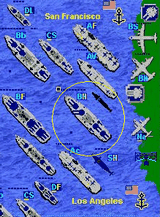 |
Battleship Game
World War 2
PC Win 10/8/7/ XP Download

|
Battleship Game - WW2 Naval
Strategy: the best choice among aircraft carrier games,
submarine and battleship games.
Missions and Scenarios:
Pearl Harbor Game
Atlantic Game 1943
Sink Cruisers Game
Midway Game
Iwo Jima Game
US Marines Game
Luftwaffe Game Pacific
Torpedo Game Boats
Bismarck Game Pacific
Destroy RAF Game
Okinawa
Us Navy Submarine Game
Fleet Submarines Game
Kamikaze Game
U Boat Game
Singapore Game
Swordfish Hunt
Patrol Boats
Air Supremacy
Alert
Battleships Game
Java
Defense
Fleet Cruisers Game
Atlantic Island
Coral Sea Game
Iron Sea
Mykonos
Imperial Ocean
Long Convoy
Skagerrak
Target Los Angeles
West Pacific Game
Pacific War Game
Leyte Transport
Emperor Hirohito
Normandy Game
South Pacific Game
Destroy USAF Game
Submarine Games
US Navy Game
Free Hunt Doenitz Game
Free Hunt Spruance Game
Free Hunt Halsey Game
Imperial Navy I
Royal Navy Game
Free Hunt Pearl Harbor Games
Midway II
Kriegsmarine I
Brisbane Convoy
Clear West Coast
Fall Of Australia
Battle For Leyte
Conquer Of Japan
HMAS Perth
Road To Okinawa
Orange Ports
Emperor Defense
Prince Of Wales
San Bernardino
Pacific Race
Heavy Duty
Tokio Express
Operation Sidney
Bomber Operation
Conquer Of Italy
Heavy Cruiser Game
Frigate Hunt
Santa Cruz
Lamansh Game
Azores Transport
Norway Convoy
Invasion
Grossadmiral
Norway Ports
Drang Nach Ost
Convoy Pk30
Ciano Defense
Sir John Tovey
Free Hunt Andrews
Germans On Pacific
Silent Hunt
Antigua
Return To Midway
Kriegsmarine Game II
Royal Air Force Game
F. Hunt Lancaster
Jamamoto Game
Free Hunt USN
Free Hunt Japan
Free Hunt RAAF
Free Hunt U Boat Game
Free Hunt Aircraft Carriers Game
Free Hunt Hawaii
Free Hunt Yamato Game
Free Hunt Iwo Jima Game
Free Hunt Pacific Game
Free Hunt Torpedos
Free Hunt Convoy
Free Hunt Germany
Free Hunt Germany II
Free Hunt Italy
Free Hunt Malaya
Free Hunt Subs Game
Free Hunt B-29 Game
Free Hunt USN 1944
Devil Island
Dragoon Carriers
|
Nuclear
weapon
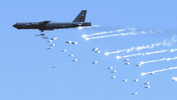
B52 Bomber |
|
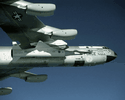
B-52 |
|
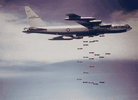
B52 Bombing |
|
|
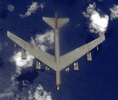
B52 |
|
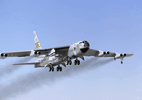
B-52 Nuclear Platform |
A nuclear weapon is a weapon deriving its energy from
nuclear reactions. These weapons have enormous
destructive potential and are posessed by only a handful
of nations. They have been used only twice in combat, by
the United States against the Japanese cities of
Hiroshima and Nagasaki at the conclusion of World War II.
Table of contents
1 Types of weapons
1.1 Advanced Thermonuclear Weapons Designs
2 Effects of a nuclear explosion
2.2 Blast Damage
2.3 Thermal radiation
2.4 Electromagnetic pulse
2.5 Radiation
2.6 Nuclear fallout
3 Weapons delivery
4 Nuclear weapons in culture
Types of weapons
Fission bombs derive their power from nuclear fission,
where heavy nuclei (uranium or plutonium) split into
lighter elements when bombarded by neutrons (produce more
neutrons which bombard other nuclei, triggering a chain
reaction). These are historically called atom bombs or
A-bombs, though this name is not precise due to the fact
that chemical reactions release energy from atomic bonds
and fusion is no less atomic than fission. Despite this
possible confusion, the term atom bomb has still been
generally accepted to refer specifically to nuclear
weapons, and most commonly to pure fission devices.
| CIA / KGB Operation
Game.
Run your own intelligence game. Travel around the
world and set up espionage game, trade with state
secrets, weapon systems, spy codes, WMD, hire
secretaries, agents, lawyers and soldiers,
establish secret agent stations, cells and bases
and search for criminals and politicians. Involve
in agent game. Game contains more than 40
missions including Nuclear Game, Cold War Game,
Secret Agent, CIA Games, USAF, Prime Minister,
RAF, Bin Laden, Sadam, KGB, Operations Iran… |
|
Fusion bombs are based
on nuclear fusion where light nuclei such as hydrogen and
helium combine together into heavier elements and release
large amounts of energy. Weapons which have a fusion
stage are also referred to as hydrogen bombs or H-bombs
because of their primary fuel, or thermonuclear weapons
because fusion reactions require extremely high
temperatures for a chain reaction to occur.
Nuclear weapons are often described as either fission or
fusion devices based on the dominant source of the
weapon's energy. The distinction between these two types
of weapon is blurred by the fact that they are combined
in nearly all complex modern weapons: a smaller fission
bomb is first used to reach the necessary conditions of
high temperature and pressure to allow fusion to occur.
On the other hand, a fission device is more efficient
when a fusion core first boosts the weapon's energy.
Since the distinguishing feature of both fission and
fusion weapons is that they release energy from
transformations of the atomic nucleus, the best general
term for all types of these explosive devices is
"nuclear weapon".
Advanced Thermonuclear Weapons Designs
The largest modern weapons include a fissionable outer
shell of uranium. The intense fast neutrons from the
fusion stage of the weapon will cause even natural (that
is unenriched) uranium to fission, increasing the yield
of the weapon many times.
The cobalt bomb uses cobalt in the shell, and the fusion
neutrons convert the cobalt into cobalt-60, a powerful
long-term (5 years) emitter of gamma rays. In general
this type of weapon is a salted bomb and variable fallout
effects can be obtained by using different salting
isotopes. Gold has been proposed for short-term fallout
(days), tantalum and zinc for fallout of intermediate
duration (months), and cobalt for long term contamination
(years). The primary purpose of this weapon is to create
extremely radioactive fallout making a large region
uninhabitable. No cobalt or other salted bomb has been
built or tested publicly.
A final variant of the thermonuclear weapons is the
enhanced radiation weapon, or neutron bomb which are
small thermonuclear weapons in which the burst of
neutrons generated by the fusion reaction is
intentionally not absorbed inside the weapon, but allowed
to escape. The X-ray mirrors and shell of the weapon are
made of chromium or nickel so that the neutrons are
permitted to escape. This intense burst of high-energy
neutrons is the principle destructive mechanism. Neutrons
are more penetrating than other types of radiation so
many shielding materials that work well against gamma
rays are rendered less effective. The term "enhanced
radiation" refers only to the burst of ionizing
radiation released at the moment of detonation, not to
any enhancement of residual radiation in fallout (as in
the salted bombs discussed above).
Effects of a nuclear explosion
The energy released from a nuclear weapon comes in four
primary categories:
Blast 40-60% of total energy
Thermal radiation - 30-50% of total energy
Ionizing radiation - 5% of total energy
Residual radiation (fallout) 5-10% of total energy
The amount of energy released in each form depends on the
design of the weapon, and the environment in which it is
detonated. The residual radiation of fallout is a delayed
release of energy, the other three forms of energy
release are immediate.
The dominant effects of a nuclear weapon (the blast and
thermal radiation) are the same physical damage
mechanisms as conventional explosives. The primary
difference is that nuclear weapons are capable of
releasing much larger amounts of energy at once. Most of
the damage caused by a nuclear weapon is not directly
related to the nuclear process of energy release, but
would be present for any explosion of the same magnitude.
The damage done by each of the three initial forms of
energy release differs with the size of the weapon.
Thermal radiation drops off the slowest with distance, so
the larger the weapon the more important this effect
becomes. Ionizing radiation is strongly absorbed by air,
so it is only dangerous by iteself for smaller weapons.
Blast damage falls off more quickly than thermal
radiation but more slowly than ionizing radiation.
When a nuclear weapon explodes, the bomb's material comes
to an equilibrium temperature in about a microsecond. At
this time about 75% of the energy is emitted as primary
thermal radiation, mostly soft X-rays. Almost all of the
rest of the energy is kinetic energy in rapidly-moving
weapon debris. The interaction of the x-rays and debris
with the surroundings determines how much energy is
produced as blast and how much as light. In general, the
denser the medium around the bomb, the more it will
absorb, and the more powerful the shockwave will be.
When a nuclear detonation occurs in air near sea-level,
most of the soft X-rays in the primary thermal radiation
are absorbed within a few feet. Some energy is
re-radiated in the ultraviolet, visible light and
infrared, but most of the energy heats a spherical volume
of air. This forms the fireball.
In a burst at high altitudes, where the air density is
low, the soft X-rays travel long distances before they
are absorbed. The energy is so diluted that the blast
wave may be half as strong or less. The rest of the
energy is dissipated as a more powerful thermal pulse.
Blast Damage
Much of the destruction caused by a nuclear explosion is
due to blast effects. Most buildings, except reinforced
or blast-resistant structures, will suffer moderate to
severe damage when subjected to moderate overpressures.
The blast wind may exceed several hundred km/hr. The
range for blast effects increases with the explosive
yield of the weapon.
Two distinct, simultaneous phenomena are associated with
the blast wave in air:
Static overpressure, i.e., the sharp increase in pressure
exerted by the shock wave. The overpressure at any given
point is directly proportional to the density of the air
in the wave.
Dynamic pressures, i.e., drag exerted by the blast winds
required to form the blast wave. These winds push, tumble
and tear objects.
Most of the material damage caused by a nuclear air burst
is caused by a combination of the high static
overpressures and the blast winds. The long compression
of the blast wave weakens structures, which are then torn
apart by the blast winds. The compression, vacuum and
drag phases together may last several seconds or longer,
and exert forces many times greater than the strongest
hurricane.
Thermal radiation
Nuclear weapons emit large amounts of electromagnetic
radiation as visible, infrared, and ultraviolet light.
The chief hazards are burns and eye injuries. On clear
days, these injuries can occur well beyond blast ranges.
The light is so powerful that it can start fires that
spread rapidly in the debris left by a blast. The range
of thermal effects increases markedly with weapon yield.
Since thermal radiation travels in straight lines from
the fireball (unless scattered) any opaque object will
produce a protective shadow. If fog or haze scatters the
light, it will heat things from all directions and
shielding will be less effective.
When thermal radiation strikes an object, part will be
reflected, part transmitted, and the rest absorbed. The
fraction that is absorbed depends on the nature and color
of the material. A thin material may transmit a lot. A
light colored object may reflect much of the incident
radiation and thus escape damage. The absorbed thermal
radiation raises the temperature of the surface and
results in scorching, charring, and burning of wood,
paper, fabrics, etc. If the material is a poor thermal
conductor, the heat is confined to the surface of the
material.
Actual ignition of materials depends on the how long the
thermal pulse lasts and the thickness and moisture
content of the target. Near ground zero where the light
is most intense, what can burn, will. Farther away, only
the most easily ignited materials will flame. Incendiary
effects are compounded by secondary fires started by the
blast wave effects such as from upset stoves and
furnaces.
In Hiroshima, a tremendous fire storm developed within 20
minutes after detonation. A fire storm has gale force
winds blowing in towards the center of the fire from all
points of the compass. It is not, however, a phenomenon
peculiar to nuclear explosions, having been observed
frequently in large forest fires and following incendiary
raids during World War II.
Electromagnetic pulse
At altitudes above the majority of the air, the x-rays
ionize the upper air, moving large numbers of electrons.
The moving electric charge causes a single wide-frequency
radio pulse. The pulse is powerful enough so that most
long metal objects would act as antennas, and generate
high voltages when the pulse passes. These voltages and
the associated high currentss could destroy unshielded
electronics and even many wires. There are no known
biological effects of EMP except from failure of critical
medical and transportation equipment. The ionized air
also disrupts radio traffic that would normally bounce
from the ionosphere.
One can shield ordinary radios and car ignition parts by
wrapping them completely in aluminum foil, or any other
form of Faraday cage. Of course radios cannot operate
when shielded, because broadcast radio waves can't reach
them.
Radiation
About 5% of the energy released in a nuclear air burst is
in the form of initial neutron and gamma radiation. The
neutrons result almost exclusively from the fission and
fusion reactions, while the initial gamma radiation
includes that arising from these reactions as well as
that resulting from the decay of short-lived fission
products.
The intensity of initial nuclear radiation decreases
rapidly with distance from the point of burst because the
radiation spreads over a larger area as it travels away
from the explosion. It is also reduced by atmospheric
absorption and scattering.
The character of the radiation received at a given
location also varies with distance from the explosion.
Near the point of the explosion, the neutron intensity is
greater than the gamma intensity, but with increasing
distance the neutron-gamma ratio decreases. Ultimately,
the neutron component of initial radiation becomes
negligible in comparison with the gamma component. The
range for significant levels of initial radiation does
not increase markedly with weapon yield and, as a result,
the initial radiation becomes less of a hazard with
increasing yield. With larger weapons, above 50 Kt, blast
and thermal effects are so much greater in importance
that prompt radiation effects can be ignored.
Nuclear fallout
The residual radiation hazard from a nuclear explosion is
in the form of radioactive fallout and neutron-induced
activity. Residual ionizing radiation arises from:
Fission Products. These are intermediate weight isotopes
which are formed when a heavy uranium or plutonium
nucleus is split in a fission reaction. There are over
300 different fission products that may result from a
fission reaction. Many of these are radioactive with
widely differing half-lives. Some are very short, i.e.,
fractions of a second, while a few are long enough that
the materials can be a hazard for months or years. Their
principal mode of decay is by the emission of beta and
gamma radiation. Approximately 60 grams of fission
products are formed per kiloton of yield. The estimated
activity of this quantity of fission products 1 minute
after detonation is equal to that of 1.1 ? 1021 Bq (30
million kilograms of radium) in equilibrium with its
decay products.
Unfissioned Nuclear Material. Nuclear weapons are
relatively inefficient in their use of fissionable
material, and much of the uranium and plutonium is
dispersed by the explosion without undergoing fission.
Such unfissioned nuclear material decays slowly by the
emission of alpha particles and is of relatively minor
importance.
Neutron-Induced Activity. If atomic nuclei capture
neutrons when exposed to a flux of neutron radiation,
they will, as a rule, become radioactive (neutron-induced
activity) and then decay by emission of beta and gamma
radiation over an extended period of time. Neutrons
emitted as part of the initial nuclear radiation will
cause activation of the weapon residues. In addition,
atoms of environmental material, such as soil, air, and
water, may be activated, depending on their composition
and distance from the burst. For example, a small area
around ground zero may become hazardous as a result of
exposure of the minerals in the soil to initial neutron
radiation. This is due principally to neutron capture by
various elements, such as sodium, manganese, aluminum and
silicon in the soil. This is a negligible hazard because
of the limited area involved.
In an explosion near the surface large amounts of earth
or water will be vaporized by the heat of the fireball
and drawn up into the radioactive cloud. This material
will become radioactive when it condenses, mixed with
fission products and other radiocontaminants that have
become neutron-activated. The larger particles will
settle back to the earth's surface near ground zero
(depending on wind and weather conditions of course)
within 24 hours, while fine particles will rise to the
stratosphere and be distributed globally over the course
of weeks or months.
Severe local fallout contamination can extend far beyond
the blast and thermal effects, particularly in the case
of high yield surface detonations. In detonations near a
water surface, the particles tend to be lighter and
smaller and produce less local fallout but will extend
over a greater area. The particles contain mostly sea
salts with some water; these can have a cloud seeding
affect causing local rainout and areas of high local
fallout.
The radiobiological hazard of worldwide fallout is
essentially a long-term one due to the potential
accumulation of long-lived radioisotopes, such as
strontium-90 and cesium-137, in the body as a result of
ingestion of foods incorporating these radioactive
materials. The hazard of worldwide fallout is much less
serious than the hazards which are associated with local
fallout.
Blast and thermal injuries in many cases will far
outnumber radiation injuries. However, radiation effects
are considerably more complex and varied than are blast
or thermal effects and are subject to considerable
misunderstanding. A wide range of biological changes may
follow the irradiation of animals, ranging from rapid
death following high doses of penetrating whole-body
radiation to essentially normal lives for a variable
period of time until the development of delayed radiation
effects, in a portion of the exposed population,
following low dose exposures.
Text is available under
the terms of the GNU Free Documentation License
|
Weapons delivery
The term strategic nuclear weapons is often used to
denote large weapons which would be used to destroy large
targets, such as cities. Tactical nuclear weapons are
smaller weapons used to destroy specific targets such as
military, communications, infrastructure.
Basic methods of delivery are:
bombers such as the B-52 and V bomber
ballistic missiles - a missile using a ballistic
trajectory involving a significant ascent and descent
including suborbital and partial orbital trajectories.
Most commonly ICBM and SLBM. Modern weapons also deliver
Multiple Independent Re-entry Vehicles (MIRV) each of
which carries a warhead and allows a single launched
missile to strike a handful of targets.
cruise missiles - A missile using a low altitude
trajectory intended to avoid detection by radar systems.
Cruise missiles have shorter range and lower payloads
than ballistic missiles, usually, and are not known to
carry MIRVs
artillery shells - for tactical use
hand held
| |
 |
 |
| Turn-based WW2
naval game, extension to the classic
Submarine game (Battleship game) where
ships/planes/subs can move. Contains plenty of
game missions, game campaigns and 40 ship,
submarine, airplane ana port artillery types,
with combat maps up to 96X96 large. |
| |
| |
|
Guns Girls
Lawyers Spies is a turn-based strategy trade
management game. You'll build your
multinational spy company, destroy competition,
hire employees, spies, and businessman, establish
spy cells, bases and objects.
There is a more than 40 missions with different
game objectives |
| |
| |
| |
|
Tycoon Strategy Game - build
your own world business empire as an arms dealer
tycoon. Travel around the world, trade with more
than 400 weapon systems, hire secretaries,
bodyguards, lawyers, fighters and tanks,
establish companies and search for criminals and
hostages.
(Free download for Win 10, 8, 7, XP) |
| |
Nuclear
weapons in culture
Nuclear weaponry has become a part of our culture, the
decades post-WW II being can be termed the atomic age.
The stunning power and the astonishing visual effects are
a strong influence on art, from Andy Warhol's silkscreen
Atomic Bomb (1965) and James Rosenquist's F-111 (1964-65)
to Gregory Green's constructions and the efforts of
artist James Acord to use uranium in his sculptures.
Films featuring nuclear war or the threat of it include
Dr. Strangelove or: How I Learned to Stop Worrying and
Love the Bomb (1964), On the Beach (1959), The Day After
(1983), The War Game (1966), Threads (1985), WarGames
(1983), and Miracle Mile (1988). Films about nuclear
weapons in the hands of individual terrorists or
extortionists include True Lies (1994), Broken Arrow
(1996), and The Peacemaker (1997). Also the series of
movies Planet of the Apes finishes with the launching of
cobalt bombs. Godzilla is considered by some to be an
analogy to the nuclear weapons dropped on Japan.
A memorable episode of The Bionic Woman featured the
threat of a cobalt bomb. A main character in Repo Man was
a designer of the neutron bomb.
Nuclear weapons are a staple element in science fiction
novels. The so-called dirty bomb was predicted in a 1943
article by Robert A. Heinlein titled "Solution
Unsatisfactory" which caused him to be investigated
by the FBI, concerned that there had been a breach of
security on the Manhattan Project.
|
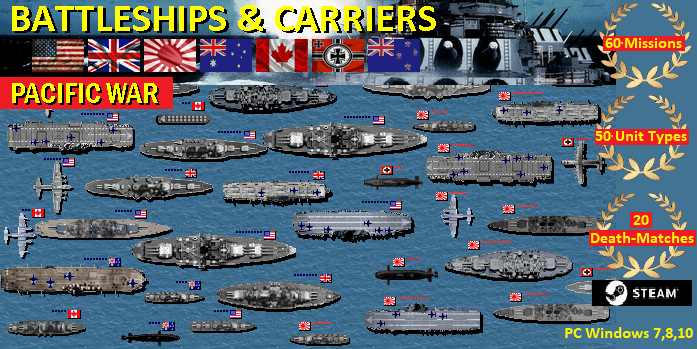
![]()